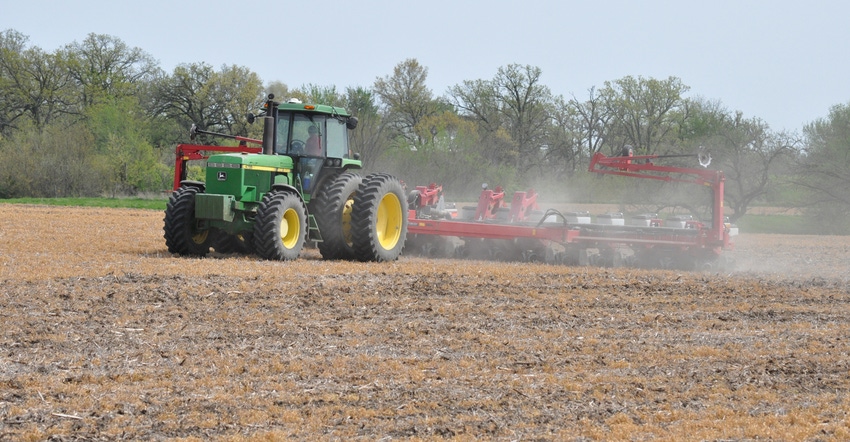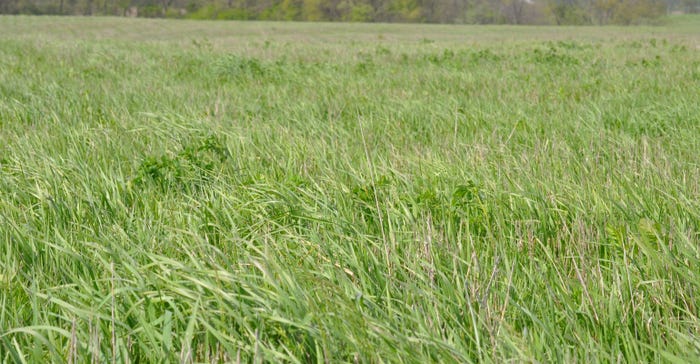
Sometimes, you don’t have a specific goal in mind when you try something new. That’s how Viola farmer Chad Bell felt when he planted cover crops for the first time in fall 2012.
“As we moved further into it, we saw the soil erosion benefits, and that became the goal,” he notes. “The soil is literally glued together in the field with bigger rye. That’s something that’s very visual.”
Today, Bell’s cover crop goals for his 100% no-till fields are healthy topsoil and better planting conditions. “We don’t have crusting issues after a heavy rain, and the ground isn’t dried out on top — it crumbles apart in your fingers,” he says. “Soil health like that makes a better planting environment, and planting into the right soil conditions should equate to good yield.”
Getting started
Bell’s northern location limits postharvest cover crop options in October and early November. He “keeps it simple” and plants 25 pounds per acre of cereal rye with his 15-inch planter. “Cereal rye is the most versatile thing out there for when we’re putting it in and what we’re hoping to get back out of it,” he adds.
The cost is roughly $23 per acre, including the cost to run the planter. In 2017, Bell saved $6 an acre by growing his own cereal rye seed in an 8-acre field near his bins. The field was seeded at 25 pounds per acre, and he applied 46 pounds of nitrogen in mid-April. He harvested the cereal rye in July with a draper head and had the seed cleaned to make it planter-ready.
Bell prefers his planter over aerial seeding after experiencing “spotty” stands. “With the planter, I’m getting every seed in the ground, and I’m covering every square inch of the field,” he explains, adding that airplanes may miss small areas by not switching on fast enough.
A preferred planting method comes with trial and error, and so does effective cover crop termination.
Termination learning curve
Termination can be a headache some years, Bell says, especially ahead of corn. “Do I kill it now and try to get planted right away? Or leave it and hopefully not have a dead mat that prevents the ground from drying at all.” he says. “It’s been slow to dry out during the cooler, wetter springs the last few years. I’ve had to practice a little more patience than what I’m used to.”
In previous years, Bell combined his preemergence herbicide with Roundup for cover crop termination. “I’ve had good luck with that and no issues with missing anything,” he notes.
In 2017, he separated his preemergence herbicide and Roundup pass. “I thought I was leaving some performance on the table because the standing rye was catching the chemical versus getting into the soil,” he says. In corn, Bell applied his preemerge herbicide after planting to avoid seeding in tracks.
 ROWDY CEREAL RYE: Chad Bell says his “man-made headaches” the past two springs were directly related to terminating cereal rye before corn. “I’ve had to practice a little more patience than what I’m used to,” he says.
ROWDY CEREAL RYE: Chad Bell says his “man-made headaches” the past two springs were directly related to terminating cereal rye before corn. “I’ve had to practice a little more patience than what I’m used to,” he says.

What works better for soybeans: terminating 8-inch cereal rye before planting or 4-foot-tall rye after planting? With his on-farm trial, Bell didn’t see a yield benefit between the two timings, but the entire field yielded 10 bushels per acre higher than previous years. Bell plans to track yield closer in the future.
“If you want to promote cover crops, it boils down to dollars and cents,” he says. “Is it going to help me or hurt me?”
Measuring ROI
Bell is part of the Growmark 4R4U N-Watch trial, which compares his no-till fields with and without cover crops, split rates of nitrogen on no-till fields with and without cover crops, and nitrogen availability throughout the season. Testing revealed the cereal rye took up nitrogen in early spring and held it until October, when the cereal rye residue began releasing nitrogen back into the soil.
Yield results are pending, but Bell believes he’s on the right track for healthier fields.
“It’s way different soil compared to a normal no-till,” he says. “Soil tilth is huge.”
Editor’s note: This was part two in a four-part series on cover crops in Illinois; part 1 shared Galva farmer Brian Corkill’s experience. Check back in the coming days for more cover crop lessons from Illinois farmers.
About the Author(s)
You May Also Like




